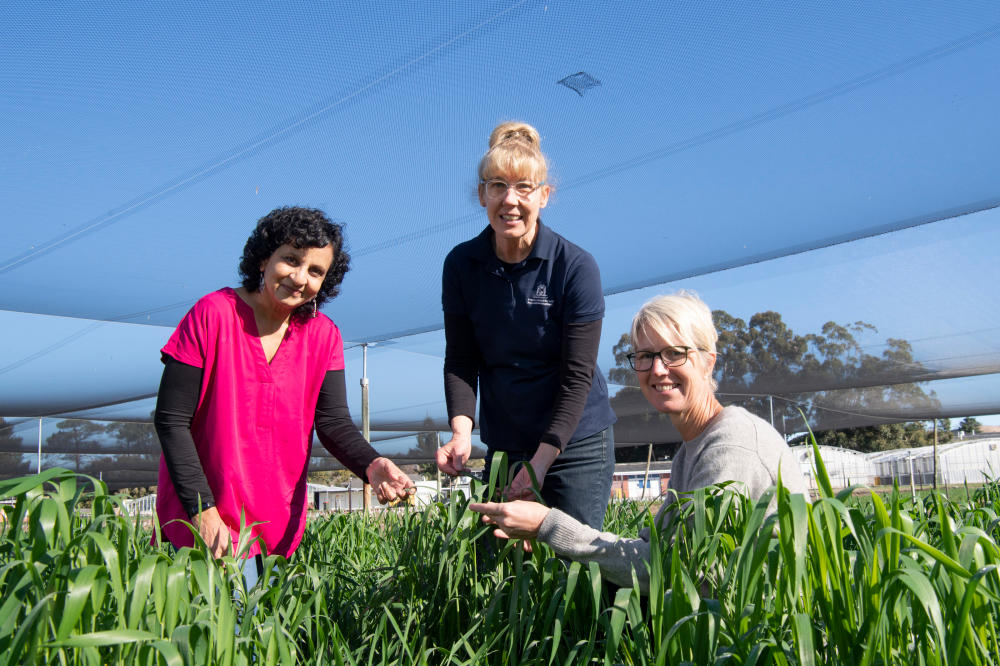
The genetic material, which will help make future wheat varieties less susceptible to the damaging fungal pathogen, is the result of more than a decade of work led by the Department of Primary Industries and Regional Development (DPIRD).
The research was co-funded by the Grains Research and Development Corporation and conducted in collaboration with the University of Adelaide, Agriculture Victoria and University of Southern Queensland.
Yellow spot is prevalent across the Western Australian grainbelt, leading to yield losses of up to 50 per cent and costing growers up to $30 per hectare in lost production and control costs annually.
In Australia, yellow spot is estimated to cause losses totalling $212 million per annum.
The long-running national research involved a large population of 1503 wheat lines being developed from a complex cross involving different sources of yellow spot resistance.
The four parents included Australian wheat varieties GBA Ruby, H45, King Rock and Magenta.
DPIRD senior plant pathologist and project leader Manisha Shankar said the large population provided a unique opportunity to maximise genetic recombination and generate potential parental stocks enriched for yellow spot resistance.
“The population was phenotyped at the seedling stage in Western Australia, Victoria and Queensland and 135 lines with high levels of seedling resistance were identified,” Dr Shankar said.
“These lines were tested at various growth stages and environments at DPIRD’s South Perth facilities, with the aim to identify lines with broad-spectrum adult plant resistance.
“The final 11 lines were identified as having very high levels of resistance at various growth stages and environments.
“These lines have now been delivered to various breeding companies and are crucial genetic stocks for future breeding.”
Spin-off research from this project has led to the development of genetic material targeting multiple diseases - yellow spot, nodorum blotch and powdery mildew - and a new collaborative project involving various breeding companies.
Picture caption: The Department of Primary Industries and Regional Development research team that has been working on the yellow spot disease resistance research - Dr Manisha Shankar, Donna Foster and Dorthe Jorgensen.


